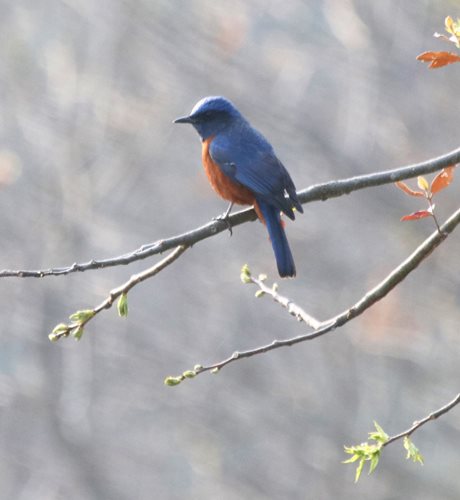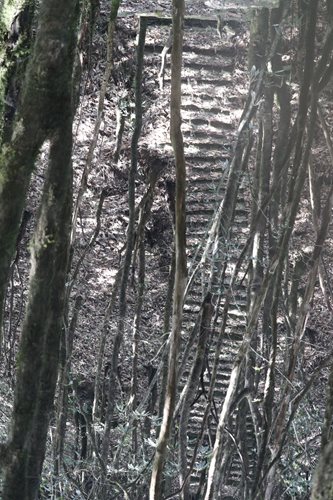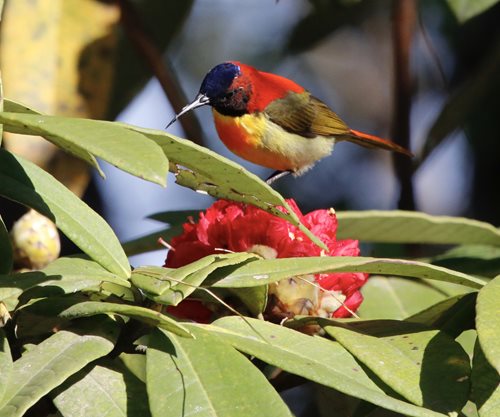Cynics claim that people are either writers or doers. Thinkers or movers and shakers. Adventurers or documenters. But some of us aspire to do be both active and to document those adventures. The challenge then is to make time for both… while not getting too distracted by all the other real-life challenges, like finding a job. I won’t make excuses but there are lots of reasons for being so neglectful of my blog lately.
Life is so culturally rich here that it is all too easy to have several ideas for blogs in a day, and then write absolutely nothing about any of them. This week though S was finally able to take a few days out and we booked into the so-called eco-resort of Shivapuri Village. Something like three decades ago the owner bought out an entire village and installed flushing toilets and solar-heated showers and turned the village into a hotel. Sadly though, this was one of many, many casualties of the 2015 earthquakes and none of the rough little "cottages" were standing after the ground stopped shaking. The owner is still rebuilding but has opted this time around for a less-than-traditional style of accommodation with corrugated iron rooves and scope for karaoke in the dining room. His clientele these days is principally middle class day-trippers from Kathmandu 18km away by way of a rough, brain-rattling road. No-one seems to notice the hundreds of non-endemic conifers that he’s planted or the slick of rubbish and mineral water bottles sliding down the hillside into an otherwise beautiful forested gully close to the guest rooms.
That said awaking to birdsong and a view of lush, mist-clad forests and north to a vista of the eternal snows is transporting and it is easy to forget that only just over the rim of the Kathmandu Valley live millions of people in what can feel like a seething urban mess.
Shivapuri Village is right on the edge of the National Park at about 2000m above sea level and we set out to wander up to the local summit at 2732m which promised to be an ‘easy’ ridge-walk with not too many ups and downs.
The word jungle has come into the English language from Nepali, meaning useless, uncultivatable land, but entering the forest proper we could see that this land, although challenging to exploit, is far from useless. The astonishingly steep slopes support lush, moss-covered forest including mighty rhododendrons just coming into blossom attracting sunbirds and other gorgeous birdlife. Early on we found ourselves the centre of attention to a rowdy bunch of Spiny Babblers – Nepal's only endemic bird species – and then disturbed an absolutely massive Honey Buzzard. We found ourselves wondering how a bird measuring 65cm can fly so effortlessly between the tree trunks and underbrush in its hunt for honeycombs.
We spent the day exploring the jungle, where easy paths had been created to help pilgrims summit the holy mountain. There were lots of resting places and also long flights of steps made from local stone, but even so we met not one person as we enjoyed the company of bands of mocking Laughing Thrushes and Rhesus Monkeys and wondered whether a Clouded Leopard might be watching us walk through his domaine. We heard tantalising sounds from fleeing quadrupeds. We encountered solitary barking deer on a couple of occasions, and saw plenty of places where wild boar had rooted and dug but the dense forest hid the identity of the four-legged herbivores. According to the species listed in the Park, they could have been a small band of Himalayan Goral (a kind of wild goat): some parts of the forest certainly smelled like an old goat had passed through. Alternatively – or as well – these could have been Himalayan Serow, the so-called goat-antelope which are also known to live in the Park.
Such sounds of unidentified wildlife made me start to think about our chances of meeting a leopard or Himalayan Black Bear. I thought back to a recent trip to see Brown Bears in Estonia where the naturalist who briefed us was a bit vague about what to do in case of meeting a bear. He recommended lying face down, playing dead while hoping that your backpack protects you from those slashing claws. Our Estonian guide said bears threw people about a bit but often lost interest quite quickly. I wondered how quickly any Nepali bear might lose interest if he smelled the packed lunch in S’s pack… but thought again and decided that any bear would find the cold boiled cauliflower, chunks of raw horseradish and slightly slimy panir sandwiches provided by the hotel as unappetising as we did.
We didn’t, of course, encounter any scary wildlife, but we did climb a lot of steps and saw and heard an amazing array of wonderful birds. It is only a pity that the hard-won paths are not a little better marked as it was all too easy to become quite disorientated in this wonderful piece of wilderness.
 |
| Rufus-breasted Niltava |
 |
| An astonishing tasks creating relatively easy paths through dense jungle at 2500m above sea level |
 |
| Fire-tailed sunbird on a rhododendron in wild forest of Shivapuri |